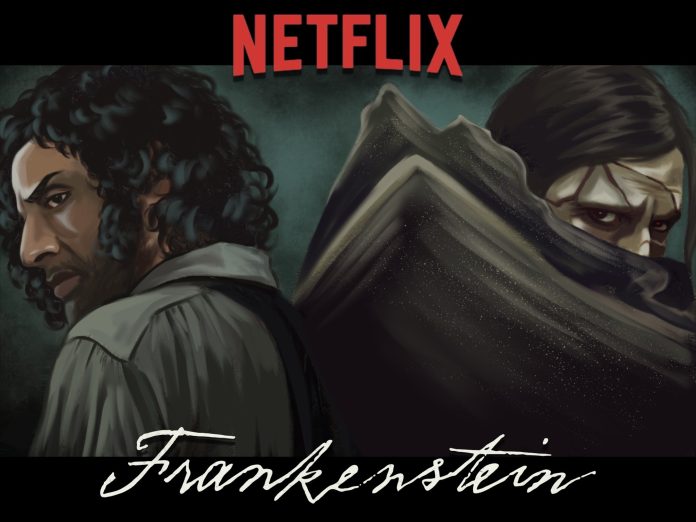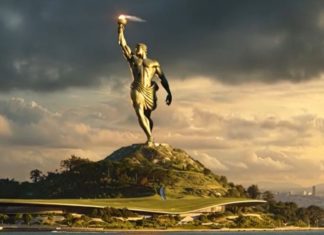I consider myself an expert on all things “Frankenstein.”
I read Mary Shelley’s original version around two years ago, and the obsession began. I annotated my copy front to back, watched several film adaptations and took a “Frankenstein”-based writing class. In that course alone, I read two more versions of the story and watched three more adaptations.
My deep dive over the years really changed my mind about classics — I was never super interested in them before I read Shelley’s.
As a “Frankenstein” enthusiast, I was ecstatic to hear Netflix was releasing a film adaptation.
When I watched Guillermo del Toro’s take on the classic, the creative differences between the book and the film surprised me. Here’s my rundown of the movie.
From a cinematic standpoint
For starters, the movie was shot beautifully, with stunning visuals and a near-perfect cast.
When Netflix announced the film, and I learned Oscar Isaac would play Victor Frankenstein, I could immediately picture him in character. Issac perfectly encapsulates the panicked intelligence of Victor, and his previous role in Marvel Studios’ “Moon Knight” is more than enough proof.
Jacob Elordi, on the other hand, is a different story — the only reason they chose him was his height and stature. The Creature’s presence in the movie is really just an appearance. I don’t think his lines delivered in “The Creature’s Tale” portion of the film represented his character nearly enough.
The prelude
My main takeaway from the prelude was that there was no introduction or background on the ship’s captain — Robert Walton, who not only has a different name in the film but also gets zero central focus. In Shelley’s original novel, it’s nice to have that setup before Victor goes into his tale, because it grounds the relevance of his character. Walton is a ship captain with too much ambition, and Victor starts his story as a warning not to let ambition overtake Walton, as it did him.
The movie began differently from the original story, with an immediate visual of the Creature, which I would have wanted later in the film to build more suspense about his appearance.
Victor’s tale
There are many details that differ from the story that I know inside and out, some of which I believe to be extremely important. For one, Victor was very open about his project. Part of what led to his ultimate downfall in the novel is his isolation during the years he works on the Creature. In this adaptation, he has a team of people helping with not only the construction and material supply but also with the actual science.
Another crucial difference between the book and film is Victor’s eventual wife, Elizabeth. In the novel, the pair meet as children when Victor’s mother takes her in from a less fortunate family, and his mother’s dying wish is for Victor and Elizabeth to marry. One of Victor’s prime motivations in the novel is protecting her from his creation out of romantic love.
In this film, Elizabeth is instead betrothed to William Frankenstein, Victor’s younger brother. Elizabeth’s romantic tension with Victor is no more than a concept in the film, making Victor’s motivations much more one-sided and limited to wanting recognition and glory.
In Shelley’s original novel, Victor’s process of building the monster is strenuous and turns him into a shell of a man. He becomes sickly, malnourished and in need of care and companionship. This film depicts him as stronger and prouder than ever, with more company and help than he knows what to do with. A lot of Victor’s madness in the novel is missing from the film — an obvious hole in the plot for me.
When Victor first interacts with his creation, they bond, and Victor is excited to teach this monster about the world. But in Victor’s words, as the Creature grows stronger, Victor’s strength wanes — he exhausts his own energy tending to the Creature and keeping it in line.
As Victor’s patience wears thin, the Creature’s resentment begins to grow. Victor starts to treat the Creature as a pet of sorts rather than a human being, which angers Elizabeth and the monster itself. Upon realizing that he couldn’t contain the Creature, Victor douses the whole building in gasoline and burns it, hoping the monster will die, which is where they part until the end.

The Creature’s tale
In the novel, the reader gains a lot more insight into the Creature’s upbringing and self-discovery, which is one of my favorite parts of the book. A lot of that is taken out potentially for time’s sake, even though the movie is still two and a half hours long.
The main aspect missing from the novel for me is the Creature’s first true act of violence. In the book, he meets this family and attempts to take on some of their chores in an attempt to establish peace. But when he reveals himself to them, they are frightened by his appearance and stature. In a fit of rage, the Creature burns their home to the ground when they are away. This important turning point in the novel was missing in the film.
The Creature’s violent nature toward Victor is hardly mentioned until the very end, which makes the Creature lack depth. In truth, diving too deep into the Creature’s inner monologue may have made for a boring movie, but it would have added so much more to the film.
Overall thoughts
The movie didn’t feel as long as it was, and the visuals were beautiful. The casting delivered, but some characters lacked depth, specifically with the Creature and Elizabeth. I would definitely recommend it, but don’t expect it to be novel-accurate.







